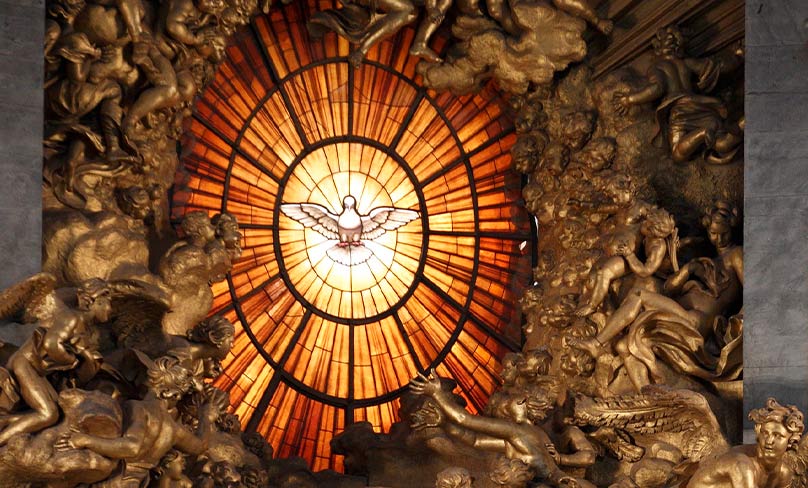
In practically all cases, when a dogma is defined, it is preceded by widespread belief in the church that the subject matter of the dogma is true. But what about belief in the infallibility of the pope and the church before the First Vatican Council (1869-1870)?
Let us go back to the beginning, to the Last Supper in fact. There Christ told St Peter: “Simon, Simon, behold Satan demanded to have you, that he might sift you like wheat, but I have prayed for you that your faith may not fail; and when you have turned again, strengthen your brethren” (Lk 22:31-32).
The church has always understood this passage to mean that Christ, the head of the church, would be with Peter and his successors down the ages to keep them faithful to his teachings, so that they in turn could faithfully pass on the teachings to the church.
This is one of the foundations for the belief that the church cannot go astray in its teaching on matters of faith and morals. Another is Christ’s words to the apostles in the Last Supper: “But the Counsellor, the Holy Spirit, whom the Father will send in my name, he will teach you all things, and bring to your remembrance all that I have said to you” (Jn 14:26).
He also said: “When the Spirit of truth comes, he will guide you into all the truth” (Jn 16:13).
On the basis of these words, it is clear that Christ, who called himself “the truth” (Jn 14:6), promised the assistance of the Holy Spirit to keep the church faithful to his teachings down the ages.
Based on this foundation, the church has always considered itself able to declare certain heterodox teachings to be not in keeping with the deposit of faith. Already in the first Ecumenical Council, held in Nicaea in 325, the church condemned the errors of Arius, who denied the divinity of Christ, and proclaimed that Christ was truly God.
In doing so, the church was in fact exercising the charism of infallibility, declaring Arius’ teaching to be heretical and defining the truth about Christ’s divinity. Only if the church was convinced that it was in the truth, that it was infallible, would it presume to do this.
Many of the subsequent ecumenical councils similarly were called to deal with heresies, condemning the errors and proclaiming definitively the truth. The Council of Trent in the 16th century was particularly prolific in condemning the errors of the Protestants.
Its dozens of canons were worded: “If anyone should say … let him be anathema.” Each one of these statements proclaimed a truth definitively and constituted a dogma of faith. This wording implied that the church was aware that in these matters it could not err; that is, that it was infallible.
The Second Vatican Council, repeating what was defined in the First Vatican Council, declared that the pope is infallible “when, as the supreme shepherd and teacher of all the faithful, who confirms his brethren in their faith (cf. Lk 22:32), by a definitive act he proclaims a doctrine of faith or morals (cf. Vatican Council I, Const. Dogm. Pastor aeternus; LG 25).
The Second Vatican Council declared that the bishops too, under certain circumstances, are infallible: “Although the individual bishops do not enjoy the prerogative of infallibility, they nevertheless proclaim Christ’s doctrine infallibly whenever, even though dispersed through the world, but still maintaining the bond of communion among themselves and with the successor of Peter, and authentically teaching matters of faith and morals, they are in agreement on one position as definitively to be held (cf. Vatican Council I, Const. Dogm. Dei Filius, 3).
This is even more clearly verified when, gathered together in an ecumenical council, they are teachers and judges of faith and morals for the universal church, whose definitions must be adhered to with the submission of faith” (CCL, can. 1322-1323; LG 25).
